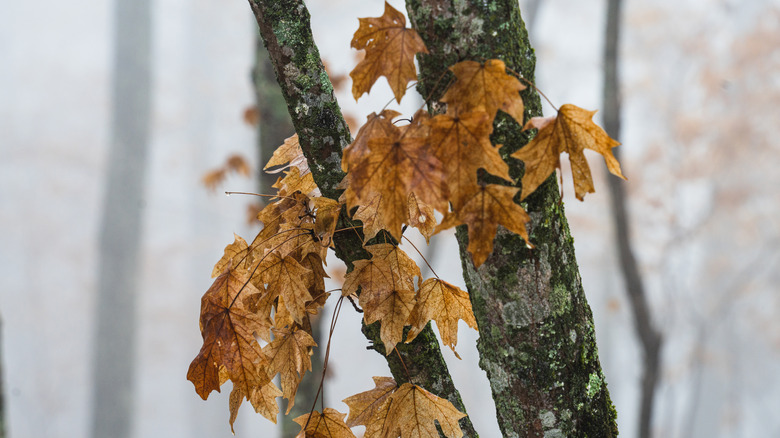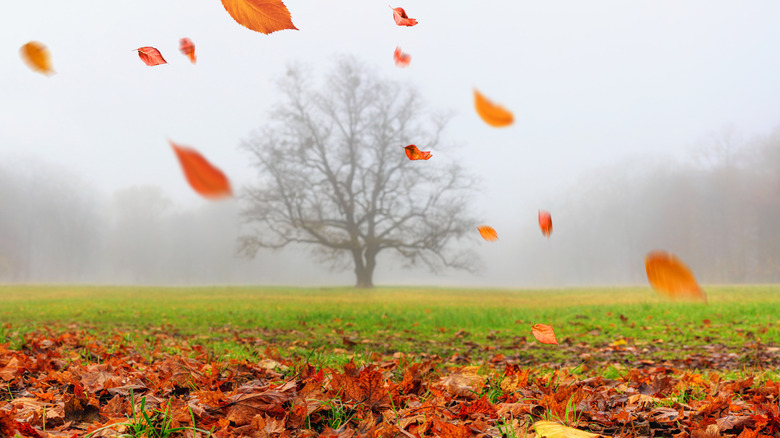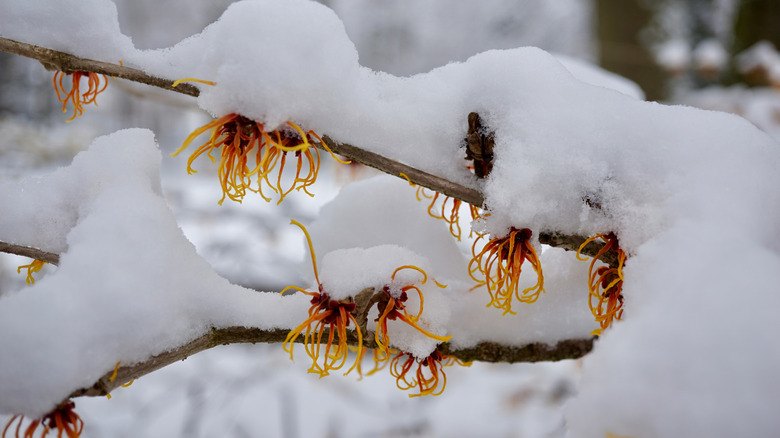Why Do Some Trees Not Lose Their Leaves During Winter?
The sound of the wind gently whispering through tree leaves during the winter might make you think you've traveled back in time by a couple of months. Why are dried, dead leaves clinging to the branches of some trees when other deciduous forest residents have shed theirs months before? Don't worry: it's not the sign of a diseased tree. There's a simple scientific function that explains why some trees hold onto their leaves in winter, but it doesn't address the deeper purpose of this phenomenon. In fact, there isn't a clear purpose for a tree to hold onto its dead leaves, though scientists have their theories.
On the physical front, we know trees holding onto their leaves are merely slow to produce the layer of cells that allows them to safely defoliate, protected from cold, and blocked from sending nutrients to their leaves. But a deeper "why" remains. Do these leaves help the tree in any way? So far, the answer is maybe.
Why you don't need to worry about winter leaf retention in trees
There's a poetic name for the phenomenon of winter leaf retention in trees, "marcescence." This word comes from the Latin verb "to shrivel." And shrivel these leaves do, but fall they don't. Or at least not all of them. (Trees often show marcescence in only their lower branches.) Young trees — or immature parts of a tree — are more likely to keep their leaves in winter than mature trees, but they tend to grow out of this behavior after a few years. Once new trees learn the ways of the world, they'll often shed this characteristic along with their withered leaves.
In most deciduous trees, a group of cells grows between the branches and the leaves, called the abscission layer, and acts as a sort of off-valve for water and nutrients once daylight begins to wane. When the growing season has ended, and leaves succumb to wind and gravity, the abscission layer helps protect branches from cold and dryness. Trees that exhibit marcescence don't finish developing this layer until spring, when they are finally ready for a glossy new canopy.
What's the deeper reason for marcescence?
There are certain species that show more marcescence than others, like oaks, beeches, witch hazels, and hornbeams. One of the most common theories is that marcescence is a way for trees to keep themselves safe from animals during the winter; clinging to dead leaves may shield new buds from hungry wildlife as well as harsh weather.
Yet, there are some other factors — both human- and weather-related — that can cause older trees and trees outside of these species to hold onto their leaves. Feeding trees too much fertilizer is a common mistake during the growing season. If you've accidentally done this, your trees may be a bit confused about when the growing season ends. Also, if the previous fall is unusually warm or there's an early cold snap, trees may hold onto their leaves longer than normal. Still, there's no reason to worry. The old leaves will fall once new spring leaves push their way into the world — which, incidentally, could act like mulch or compost, breaking down to feed the soil around the tree.


